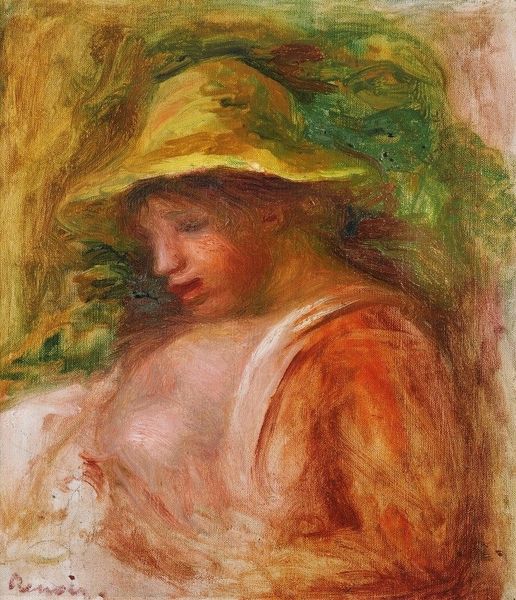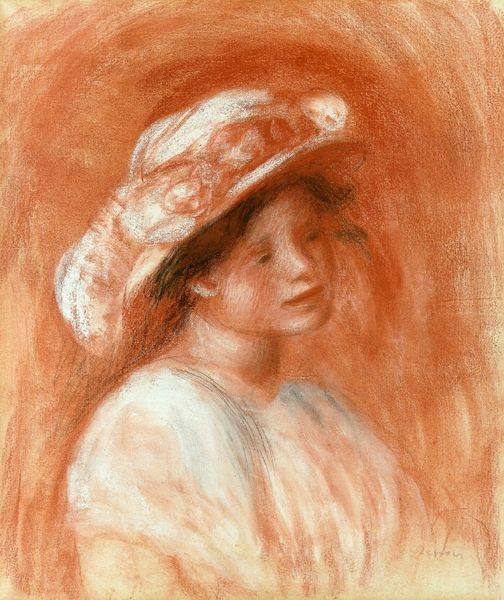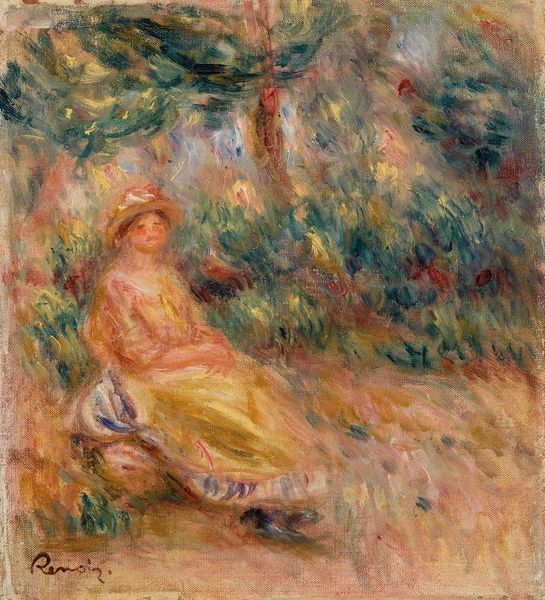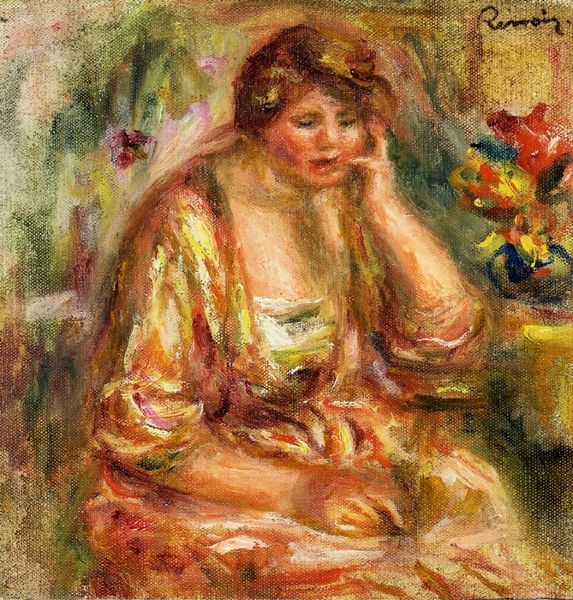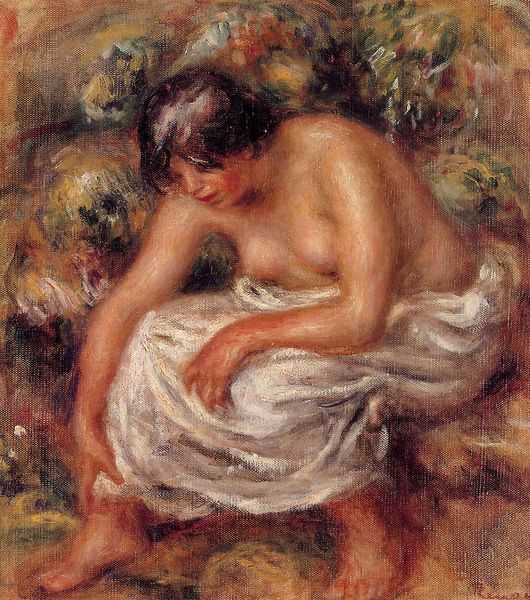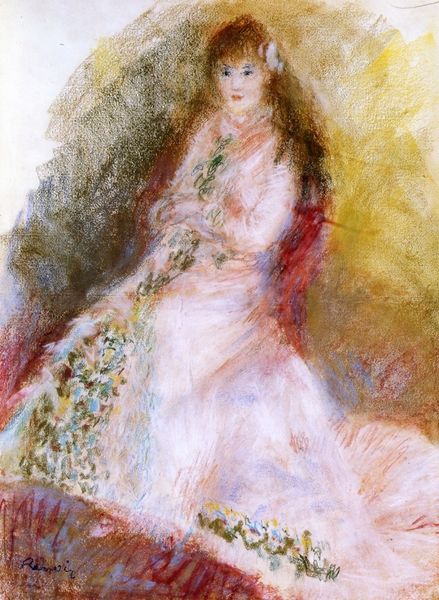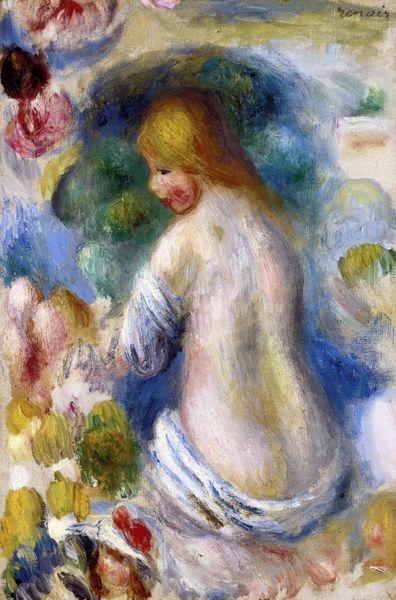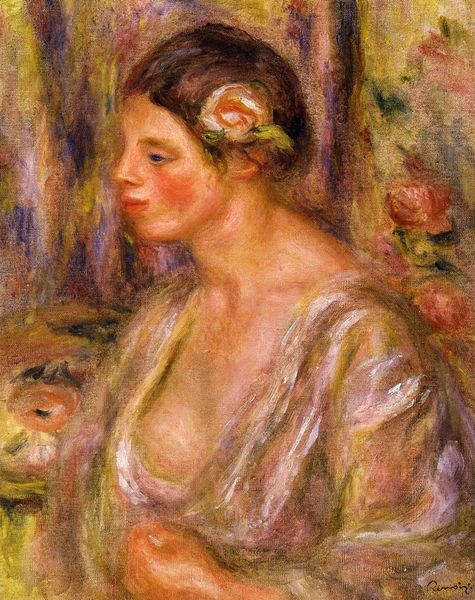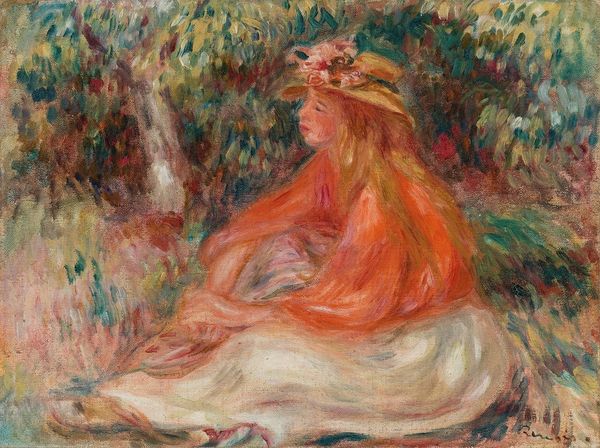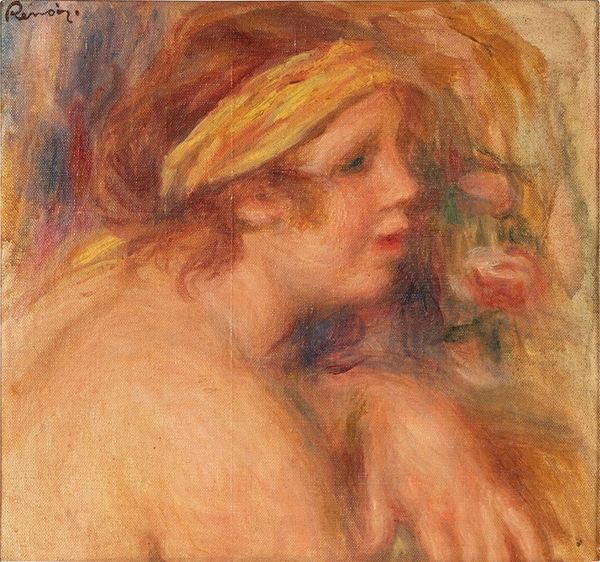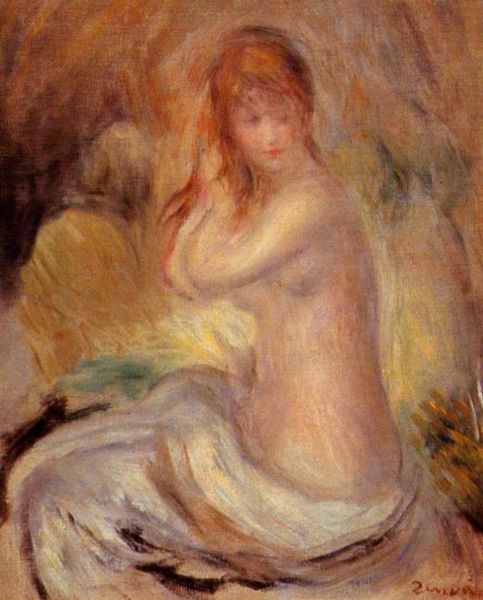
painting, plein-air, oil-paint, impasto
#
portrait
#
painting
#
impressionism
#
plein-air
#
oil-paint
#
landscape
#
figuration
#
impasto
Copyright: Public domain
Curator: Here we have "Young Woman, Seated," painted by Pierre-Auguste Renoir. It's an oil-on-canvas piece, part of a private collection. Editor: My first impression is one of tranquil intimacy, almost voyeuristic in its casual capture. The lush greens seem to cocoon her. Curator: Indeed, Renoir’s style is immediately recognizable. He captures a sense of fleeting, joyful moments using broken brushstrokes and vibrant colors. Notice how light dapples across the young woman’s figure and the foliage. The use of impasto here provides a palpable texture. Do you find it resonates beyond the purely aesthetic? Editor: Absolutely. Her averted gaze invites a certain reading: she’s a subject in, but perhaps also of, her own landscape. She seems self-contained, maybe even a bit melancholic. It speaks to the constraints placed upon women as objects of beauty, situated but never truly autonomous. The vibrant, lively landscape seems at odds with her posture, raising a fascinating tension. Curator: It's tempting to see a subtle challenge to conventional portraiture, one where the subject’s internal state is at the fore rather than her external presentation. Renoir frequently portrayed women in such private moments, conveying a sense of immediacy and access, an aesthetic transparency meant to invoke emotional access. It’s worth considering what's emphasized through his pictorial language. What do the symbolic choices and impressionistic effects offer, and potentially withhold? Editor: I appreciate how you've noted Renoir's intent. But it's precisely this "transparency" that, for me, bears closer interrogation. The artwork has, consciously or not, helped normalize very specific gazes. Can "immediacy" risk aestheticizing even genuine female disquiet into picturesque, passive reception, further centering an active, masculine viewer? Curator: It’s important to critically reevaluate artistic legacies; this dialogue brings historical consciousness to our understanding. It's through such conversations that we enrich our awareness of art's lasting cultural echoes. Editor: And helps us move past uncritical celebration. Instead, we actively recognize the visual grammars at play, along with how they continue shaping contemporary modes of thinking about, and enacting, gender.
Comments
No comments
Be the first to comment and join the conversation on the ultimate creative platform.

